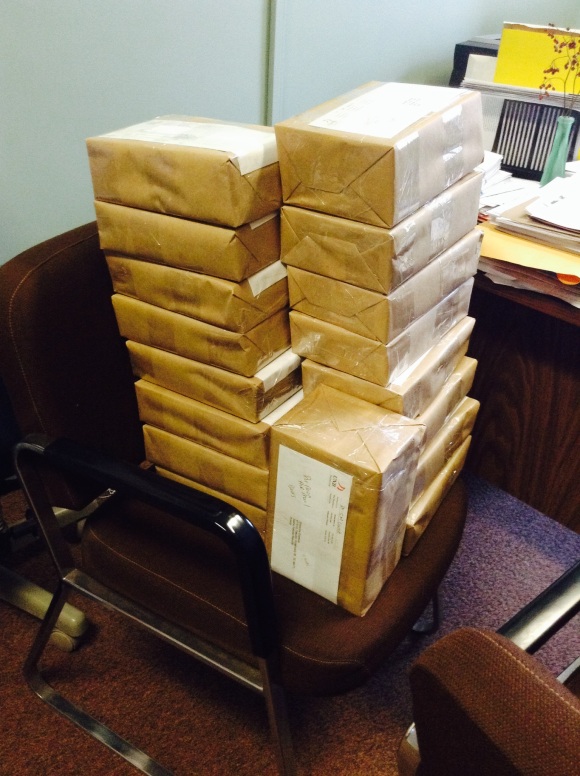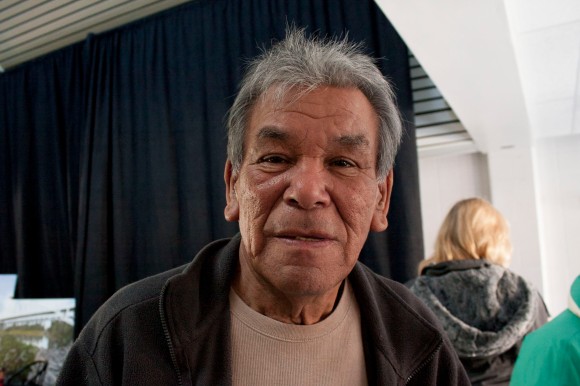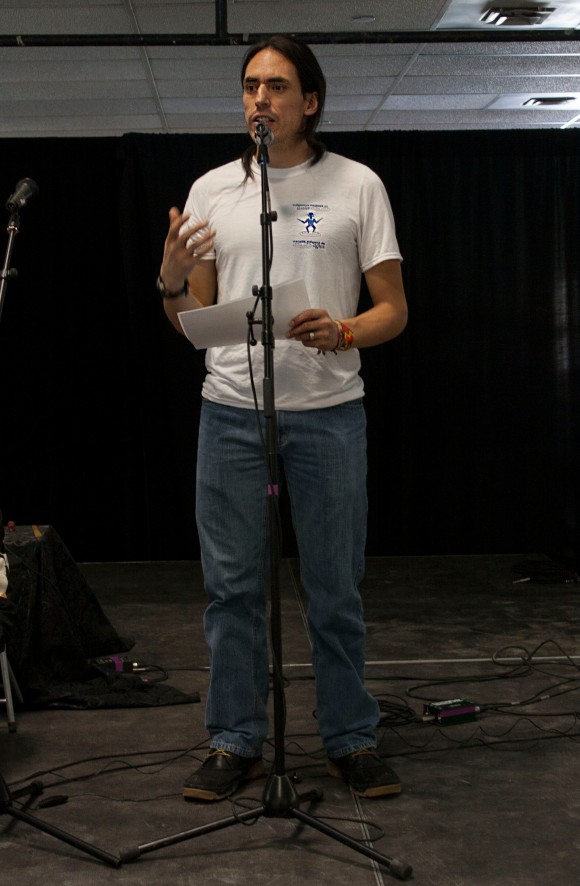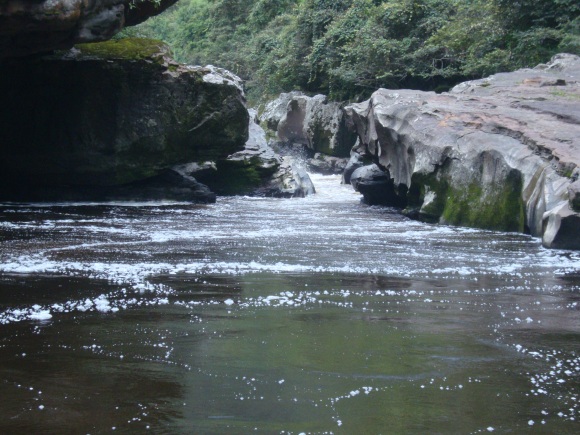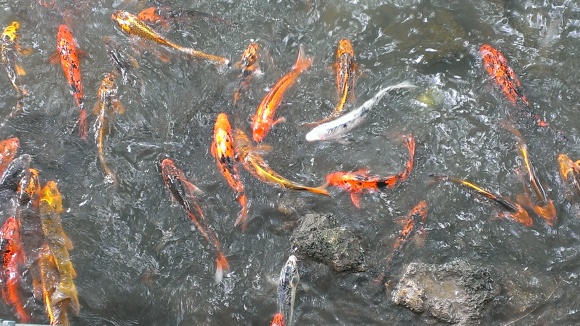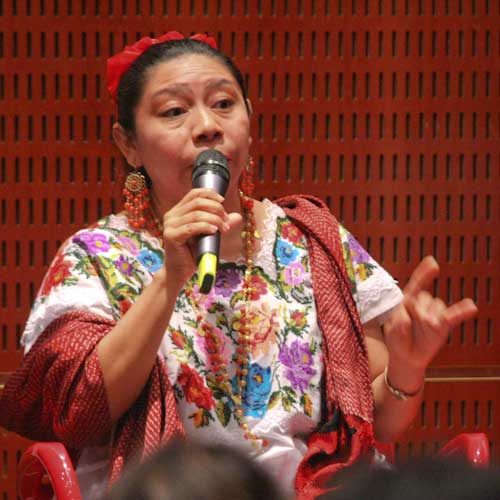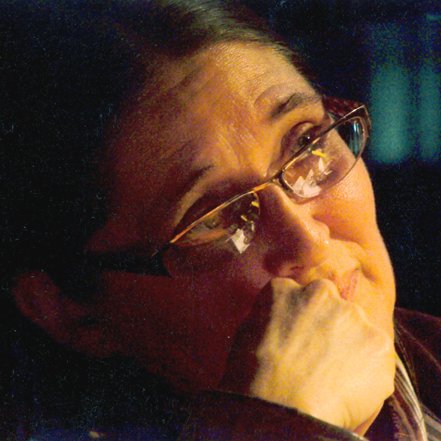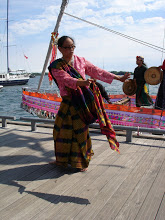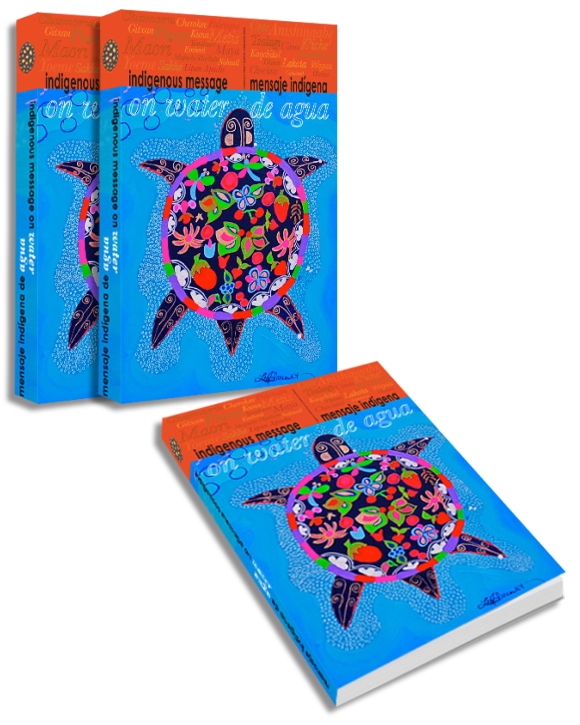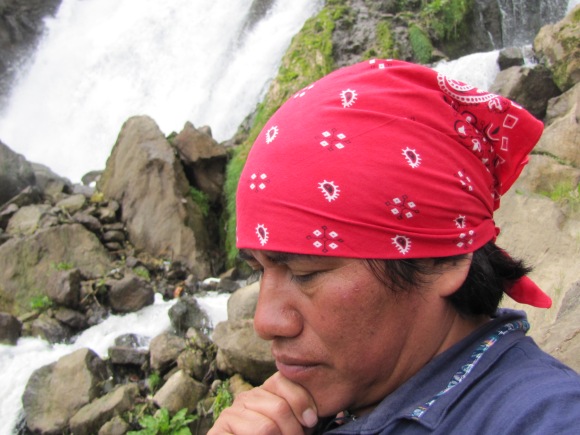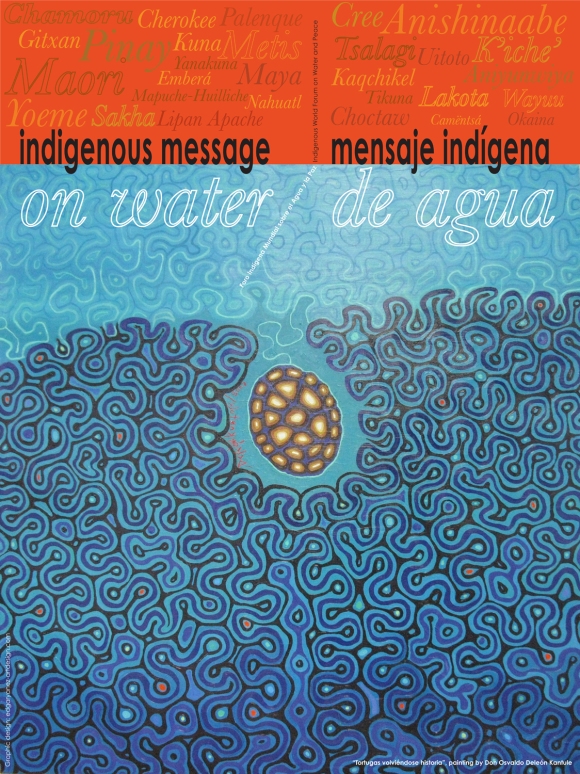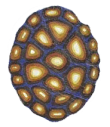
(English version below)
Hace poco escuchaba a mi amigo Miguel Rocha Vivas parafrasear las palabras del Taita Efrén Tarapués Cuaical:
“Hay que saber ser como el agua. Del río, aprender a fluir. De la piedra, aprender a detenerse. De la espuma: aprender a danzar”. *
Epigrama andino que ilumina esta tarde de julio, 33 días antes de que se acabe la campaña en Indiegogo para publicar nuestra antología Mensaje Indígena de Agua:
ð http://www.indiegogo.com/projects/indigenous-message-on-water
¿Dónde están los amig@s que van a fluir, a resistir y a danzar este proyecto con nosotros…?
Porque nosotros vamos claros y dispuestos, ¡claro que sí!, y necesitamos fortalecer el caudal del mensaje, hacerlo retumbar. Quienes ya hemos saltado al río del proyecto, vamos dispuestos a entregarlo todo en la corriente. Los 27 lectores que ya se animaron a ordenar el libro (electrónico o en papel), los 14 sponsors que ya adquirieron el poster oficial y la franela exclusiva (esperen en estos días el adelanto…), los 60 autores que sin esperar nada a cambio nos regalaron sus textos desinteresadamente, los 3 artistas invitados, el diseñador y diagramador (Edgar Yanez, ¡gracias, chamo!), los 4 editores y traductores que hemos gastado horas navegando; todos, absolutamente todos, estamos convencidos de acompañar este cauce colectivo sin esperar nada a cambio, más que un intercambio de palabras,
de poemas,
de ideas,
de tradiciones sobre y para el Agua.
¿Entonces, dónde están los amig@s que van a fluir, a resistir y a danzar con nosotros este proyecto independiente…? ¡Estamos esperándolos en la orilla!
No lo piensen más, den CLICK ARRIBA, ¡hoy el agua está clara y refrescante para un clavado perfecto de ballena! Mientras esperamos sus generosas donaciones, los dejamos con la cuarta entrega de la Antología. Hoy desde el Sur Profundo, con una poeta huilliche inolvidable.
* Las palabras exactas del taita se pueden leer en “Pütchi Biyá Uai 2” (http://es.scribd.com/doc/94706606/Putchi-Biya-Uai-Volumen-2-Miguel-Rocha-Vivas).
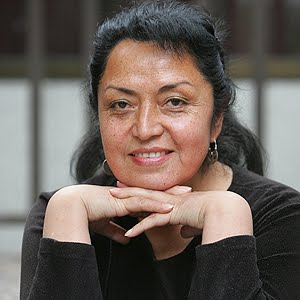
graciela huinao
nación mapuche-huilliche, chile
Graciela Huinao (garra de tigre) es poeta y narradora mapuche-williche/Nación Mapuche (1956). En 1987 publica su primer poema “La Loika”, y en 1994 hizo parte de la compilación Ül: Four mapuche poets. Su poesía ha sido antologada en Chile, Francia, Polonia, Suecia, Argentina, México, España, Rumania, USA., Colombia, Nicaragua, Ecuador, Uzbekistán y Macedonia. Su trabajo literario la ha llevado a Argentina, Brasil, Paraguay, Perú, Ecuador, México, USA., China, Colombia, Nicaragua y Macedonia. Hoy prepara una novela desde la oralidad a la narrativa: KATRILEF, vida de una mujer williche. Su poesía está siendo traducida al hebreo.
Ngillatun lafken meu
Sechuam ñi ngüñün engün
kiñeke meu
chi pu williche lafken meu mülelu
entukülafakeingün ñi weñangkün ruka meu.
Entupültrüu-küpalkeingün
ka puukeingün Pukatriwe meu
wemüalu Ngillatun meu
chi wesake püllü ngüñün meu
yalal amulelu pire mapu meu.
Chi pu williche ka chi lafken
kuñiutukuniewingün.
Ngillatun en la costa
Para poner tranca a la miseria
cada cierto tiempo
los williche de la costa
desclavan de su ruka las penas.
Se descuelgan de la historia
y a Pukatriwe llegan
espantando con el Ngillatun
al maligno espíritu del hambre
que va en estampida por la cordillera.
Los williche y el mar
en vigilia
comulgan tiempos de miseria.
(El Ngillatun es la principal ceremonia religiosa del pueblo Mapuche; allí, los Williche hacen su rogativa al mar. Los Williche son la gente del sur, con relación al mapa del territorio Mapuche. La ruka es la casa mapuche. Pukatriwe es el lugar donde el pueblo Williche realiza su ceremonia religiosa, a orillas del mar.)
~~~

A BIT AGO, a dear friend, Miguel Rocha Vivas, was paraphrasing the words of the Taita Efrén Tarapués Cuaical:
“We must learn to be more like water: learn how to flow from the river; how to restraint oneself, from the rock; and how to dance, from the foam”. *
This Andean epigram shines upon us this summer afternoon on which we stand, but with 33 days left on our Indiegogo campaign to publish the Indigenous Message on Water:
ð http://www.indiegogo.com/projects/indigenous-message-on-water
And so we ask: where are our friends who will flow with us, stand in resistance and dance with us, on this project?
We are committed! But we need your help to strengthen our message, to make it roar. Of course, those of us who have jumped in the river are ready to give it our all in this current. The 27 readers who have purchased the book, the 14 sponsors who have acquired the poster and/or the custom t-shirt (a sneak-peek of these is forthcoming btw!), the 60 authors who gifted us with their texts, the 3 artists, the designer (Edgar Yanez, thank you, chamo!), and the 4 editors/translators who have spent hours upon hours navigating this river; all of us, every one of us, with the conviction to follow this collective river-bed to the sea, expecting nothing in return but the sharing of words,
poems,
ideas,
traditions about and for Water.
¿But where are our friends who will flow with us, stand in resistance and dance with us, on this independent project? Please do not wait any longer and CLICK on the link above. The Water is fresh and clear today; just perfect for the whale’s dive!
We wait for you today by the shore, leaving here for you the fourth text from our Anthology: a poem coming to us from the Deep South, from the pen of an unforgettable Huilliche poet.
* The Taita’s exact words can be read here in “Pütchi Biyá Uai 2” (http://es.scribd.com/doc/94706606/Putchi-Biya-Uai-Volumen-2-Miguel-Rocha-Vivas).

The ruka is the traditional Mapuche hut
graciela huinao
nación mapuche-huilliche, chile
Graciela Huinao (tiger claw) is Williche-Mapuche (Mapuche nation), poet and narrator (1956). She published her first poem, “La Loika,” in 1987. In 1994, her poetry was published in the United States in Ül: Four mapuche poets. She has been included in anthologies from Chile, France, Poland, Sweden, Argentina, Mexico, Spain, Romania, USA, Colombia, Nicaragua, Ecuador, Uzbekistan and Macedonia. Her literary work has brought her to Argentina, Brazil, Paraguay, Peru, Ecuador, Mexico, USA, China, Colombia, Nicaragua, and Macedonia. Her current work in progress moves across orality and narrative: KATRILEF, vida de una mujer williche, novela. Her poetry is currently being translated into Hebrew.
Ngillatun on the Coast
To put a clamp on misery
from time to time
the Williche of the coast
unpin their sorrows from their ruka.
Unhang themselves from their history
and come to Pukatriwe
frightening with their Ngillatun
the evil spirit of hunger
that stampedes across the cordillera.
The Williche and the sea
a vigil
in communion with misery.
(The Ngillatun is the main religious ceremony of the Mapuche nation, where the Williche people make their pleas to the sea. The Williche are people of the South, according to the map charting Mapuche territory. Pukatriwe is the place on the Pacific coast where the Williche people hold their ceremony.)
 This week, we finished packing, sealing, labeling and sending hundreds of packages, which are right now traveling to the authors’ and funders’ places around the world. Canada Post’s employees are now close friends after days and weeks receiving from us bags, packages, rolls, bundles, and travelling towers of water! The Indigenous Message on Water is impregnated with an unusual force, so we are sure that boats, airplanes, customs and cities’ labyrinths will not be a problem for them to arrive clearly to their destination.
This week, we finished packing, sealing, labeling and sending hundreds of packages, which are right now traveling to the authors’ and funders’ places around the world. Canada Post’s employees are now close friends after days and weeks receiving from us bags, packages, rolls, bundles, and travelling towers of water! The Indigenous Message on Water is impregnated with an unusual force, so we are sure that boats, airplanes, customs and cities’ labyrinths will not be a problem for them to arrive clearly to their destination.
